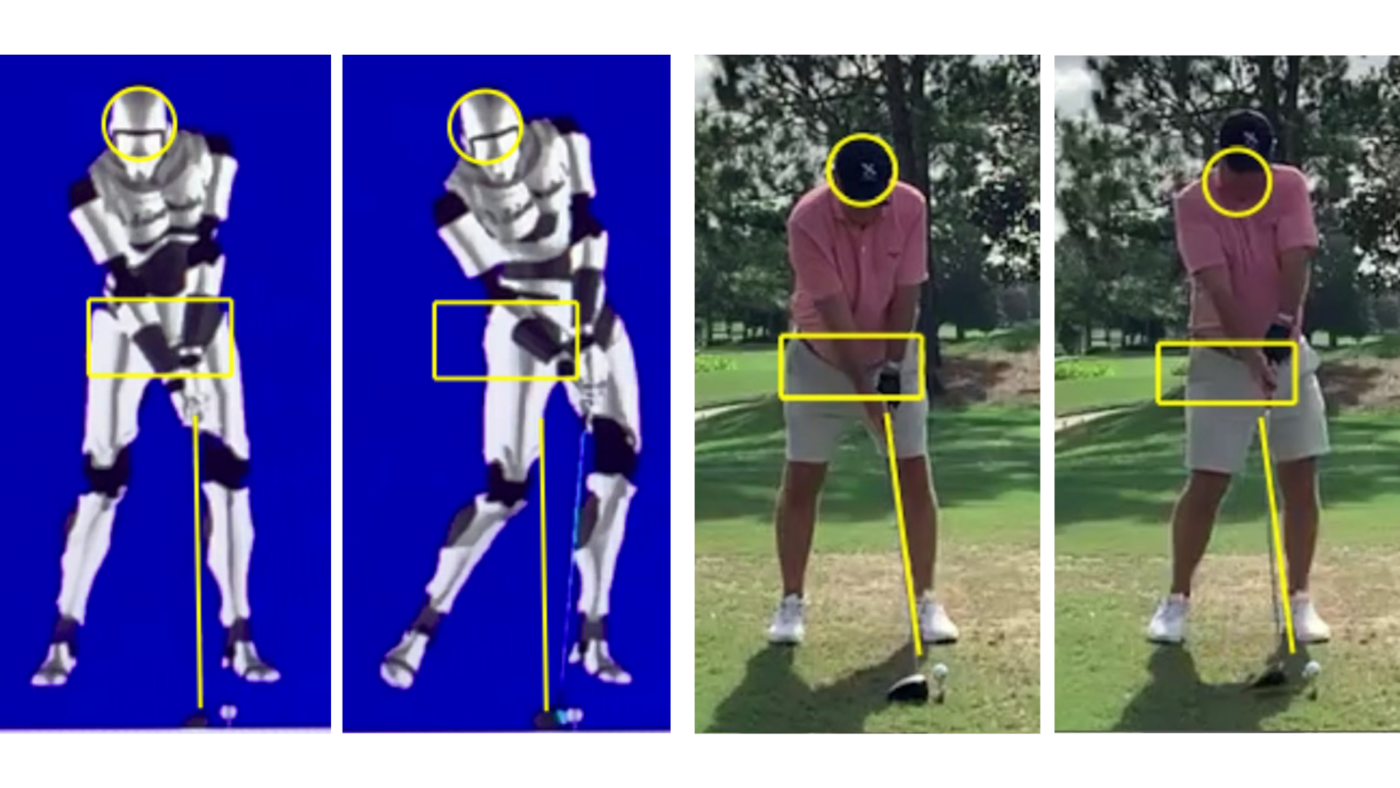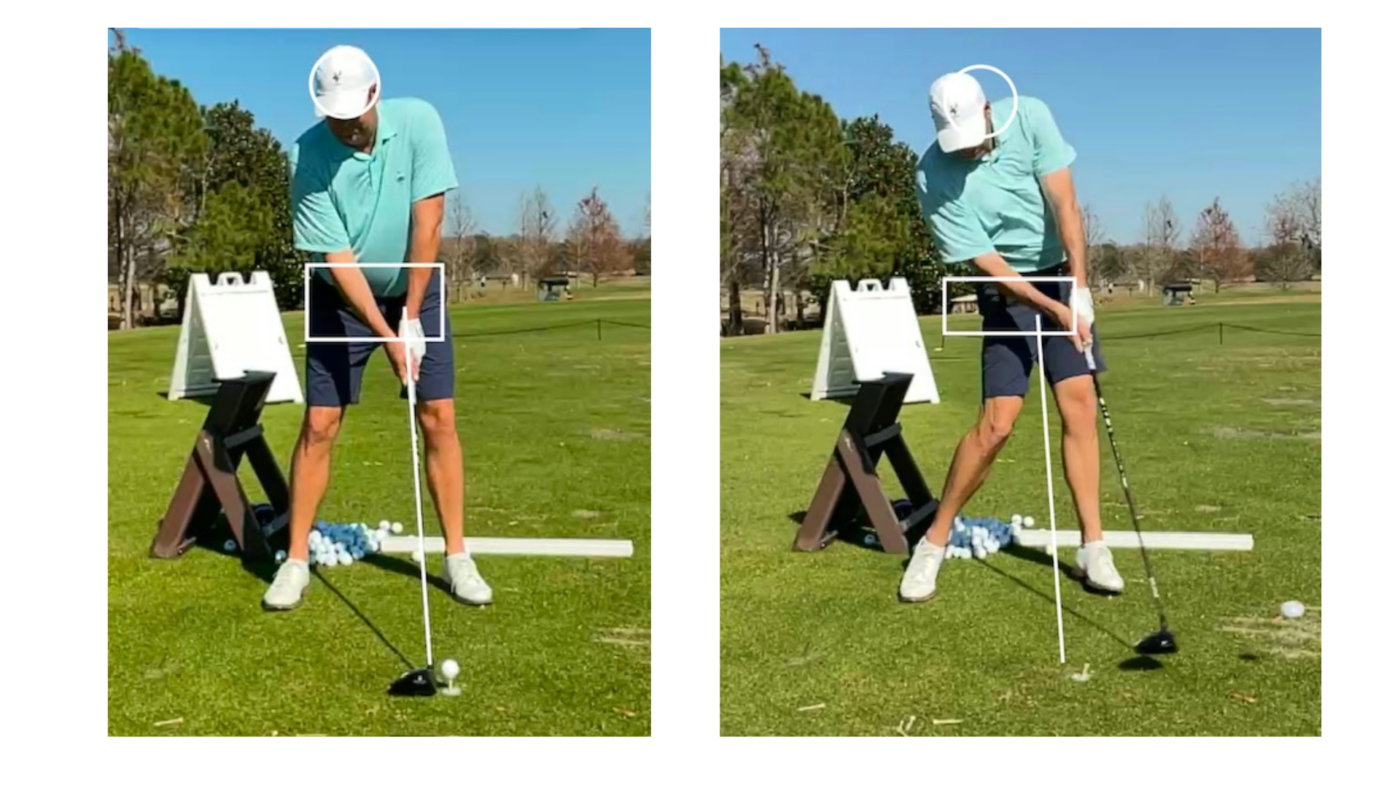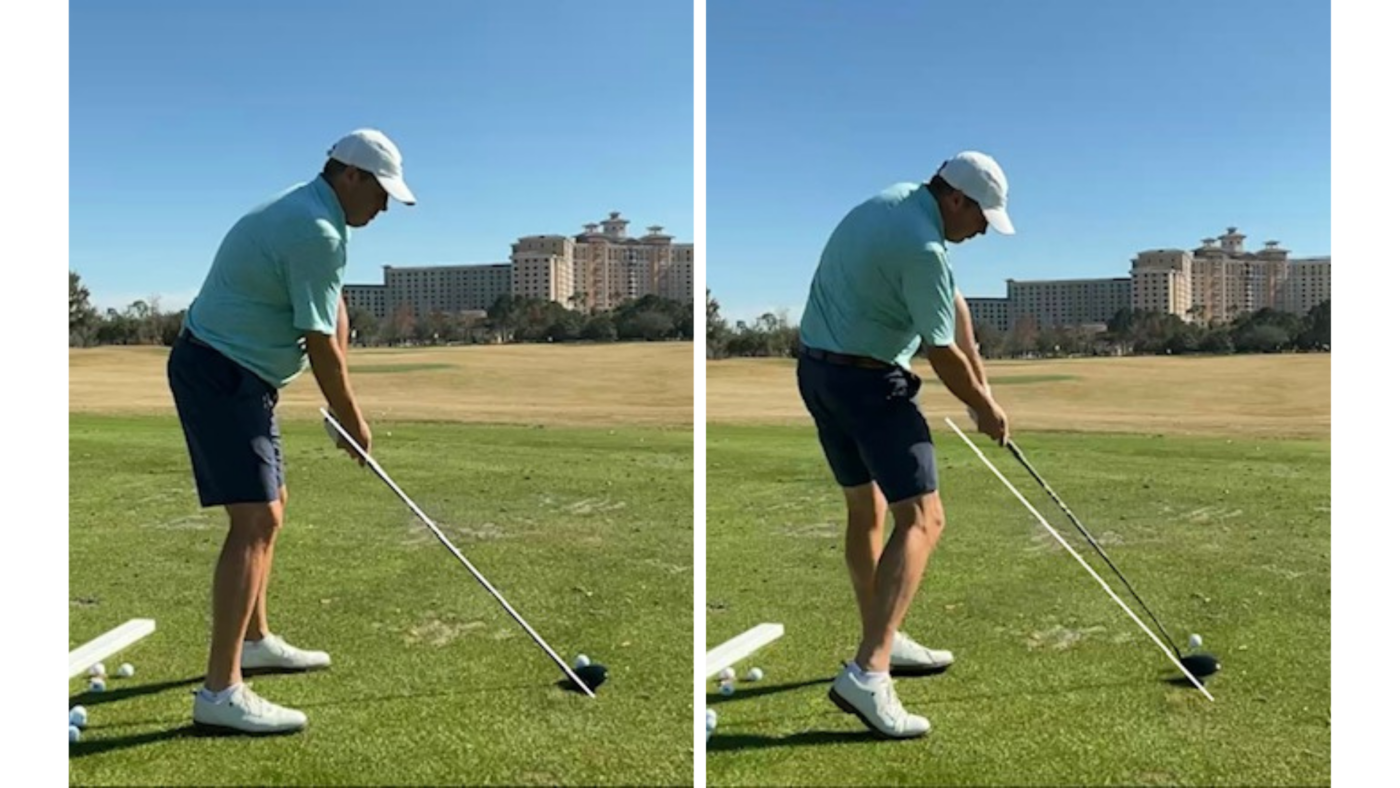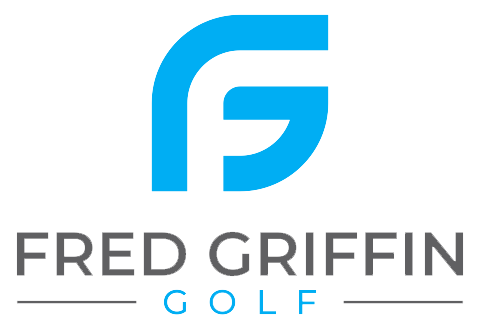In the golf swing, the impact position represents the critical moment where skill, technique, and power converge. Unlike the static setup, impact is a dynamic, high-speed position that separates exceptional ball strikers from average players.
In the accompanying photographs—showing a face-on view and a down-the-target-line view—I compare three golfers at setup and impact: a model professional, a scratch amateur, and an eighteen-handicap amateur.
Face-on View Comparisons

Model pro vs Eighteen-Handicap Amateur

Elite Amateur
Professional and Elite Amateur Golfer’s Impact
Face-on view demonstrates:
- Weight Shift: Elite players transfer nearly all their weight to the lead side, with hips moving six inches forward from the setup position. This dramatic shift generates power and consistency
- Slightly Stronger Grip: The hands are well in front of their setup position opening the clubface. The grip delivers the clubface square at Impact, avoiding any manipulation of the clubface.
- Upper Body Control: The shoulders remain close to their original setup position, with a slight tilt to accommodate the forward hip and hand positions. The head remains steady to act as an axis to control the application of power.
Amateur Golfers’ Impact Challenges
Eighteen-Handicap Amateur (Critical Flaws): Face-on View:
- Weak Grip: Hands returned to Setup position – weak grip causing open clubface and slice spin
- Weight Shift: Minimal weight shift indicated by the back foot is still on the ground – a compensation for a weak grip
- Upper Body Control: Head drifting forward reducing the shoulder tilt and dynamic power transferred to the club
Down-the-Target-Line View Comparisons

Model pro vs Eighteen-Handicap Amateur

Elite Amateur
Professional and Elite Amateur Golfer’s Impact
- Upper Body Control: The shoulders return virtually to the same position as Setup, even though the hips are much more open at Impact
- Lower Body Rotation: Proper impact involves significant hip rotation, creating “daylight” between the legs and positioning the lead leg visibly left of the trail leg
- Right Arm Extension: The right arm has lost some of the bend it had earlier in the downswing, but it is extending and adding power to the swing
- Hand and Club Position: Centrifugal force raises the hands higher and causes the shaft to “droop”- their clubs are properly fit to counter this position
Amateur Golfers’ Impact Challenges
Eighteen-Handicap Amateur (Critical Flaws): Down-the-Target-Line View:
- Lower Body Rotation: Hips remain square to target line, right heel barley raised with limited weight shift, no “daylight” between legs
- Arm and Hand Position: Due to limited shift and turn of the lower body to “clear out” of the way, the arms are forced to go out “over the top”
- Upper Body Control: The upper body is pulling back away from the ball and lacks the proper tilt to allow the right shoulder to work down and through Impact
- Hand and Club Position: The combination of the weak grip and “over the top” path the hands and club are extremely vertical at Impact producing a slice
Practice Recommendations
- Use video analysis to track your impact pattern
- Focus on lower body shift and rotation
- Ensure clubs are properly fitted
- Adopt a slightly stronger grip
- Allow impact to happen naturally, not through conscious manipulation
- Click here to watch my detailed You Tube video demonstrating critical components of Impact
Remember, the perfect impact position is a byproduct of proper preparation and fluid movement. Master the preceding swing elements, and impact will take care of itself.
